There is an urban myth about ladybugs that claims you can tell how long an adult ladybug will live by counting their spots. Not to burst your bubble, but just like any legend and old wives’ tale related to the dome-shaped, adorable dotted critters, this is scientifically wrong. One thing that you can tell by counting the spots of the colorful beetle is the kind of ladybug.
So, how long do ladybugs live? The adult ladybug life cycle is 1 year, however, 2 years is possible. Locations with mild winters and plentiful food can increase longevity. There are risks to their life, predators that eat them, and exposure to weather events flooding rain, droughts, and cold snaps can prematurely kill them and their food sources.
Instead of counting the spots to know how long a ladybug will live, stick with us as we made full in-depth research to solve this mystery.
Read on to find out more about the life expectancy of the much-loved beetle.
The Lifecycle Of A ladybug
The lifespan of a ladybug depends on various factors such as weather conditions and predators. If all goes well, a ladybug can live to two years. However, the average life expectancy is one year,
The beloved insects can adapt to their environment for a longer lifespan. Their adaptive behaviors begin from the time they are larvae and continue into adulthood. They include, among others
- Laying eggs in a food-rich environment so they can start eating early
- Foraging in plain sight so predators can see their red and black dots and stay away
- Producing foul-smelling secretions
Just like butterflies, the ladybird goes through the fascinating transformation process known as metamorphosis and includes four phases in its life cycle: the egg, larvae, pupae, and finally, adult.
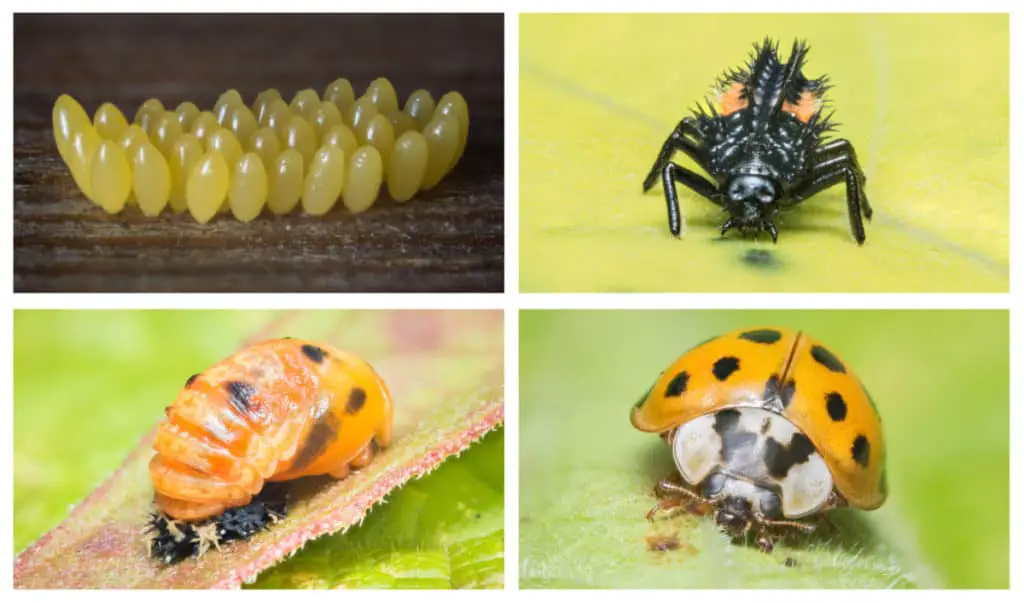
Eggs
The life cycle begins with an egg. Once she has mated, the female ladybug lays a cluster of five to 30 eggs and tucks them away under the leaf to keep them away from predators and from the wind that can blow them off.
Ladybug eggs are yellow and form a tight cluster and you can find them lining the underside of leaves.
According to scientists, the cluster includes fertile and infertile eggs so that when the fertile ones hatch, they can feed on the infertile ones, when aphids are in limited supply. The female ladybug can lay roughly 1000 eggs in its lifetime. The fertile eggs will hatch within ten days.
Larvae
Ladybug eggs hatch into larvae that resemble tiny alligators with spikes on the back and six legs sticking out. The larvae have a voracious appetite that continues into adulthood.
They eat up little worms, aphids, and insects. The larvae need to eat a lot to keep growing and molting. They molt four times before reaching the pupae stage. You will notice the larvae already have yellow spots.
They remain as larvae for one month. Larvae attach themselves to the underside of the leaf when they are ready to turn into a pupa.
Pupa
As the ladybug larvae begin pupating, it takes on an orange hue on the outer shell. The shell features visible black spots. This shell protects the pupa inside as the larvae break down within two weeks.
Interestingly, the ladybug uses cells that produce a similar effect to testosterone, the hormone that causes puberty changes in girls and boys. But the cells in lady beetles are known as histoblasts, and they help the pupa develop into adults.
Adults
Becoming an adult is the final stage of metamorphosis. There are two stages to ladybug adulthood: young adult and mature adult.
The young adult ladybug is still vulnerable to predators because the exoskeleton is still soft, and it hasn’t fully developed. Their shells are also pale green making them more susceptible to being eaten by birds and spiders.
The mature adult has a wholly developed exoskeleton that features the black dots against a yellow or red backdrop.
Adult ladybugs can eat up to 5,000 aphids in their lifetime. They maintain this massive appetite for their entire life, making them excellent for pest control.
The lifecycle of a ladybug typically takes place in early summer. It takes four to eight weeks for a ladybug to grow from the egg stage to adulthood.
How Do The Seasons Affect The Life Expectancy Of Ladybugs?
Winter
Just like other insects and animals, lady beetles tend to retreat during the cold season i.e they hibernate during winter. They tend to seek warmth in cracks and crevices where they gather in groups. So, don’t be surprised to find the adorable critters stuck on the window sill.
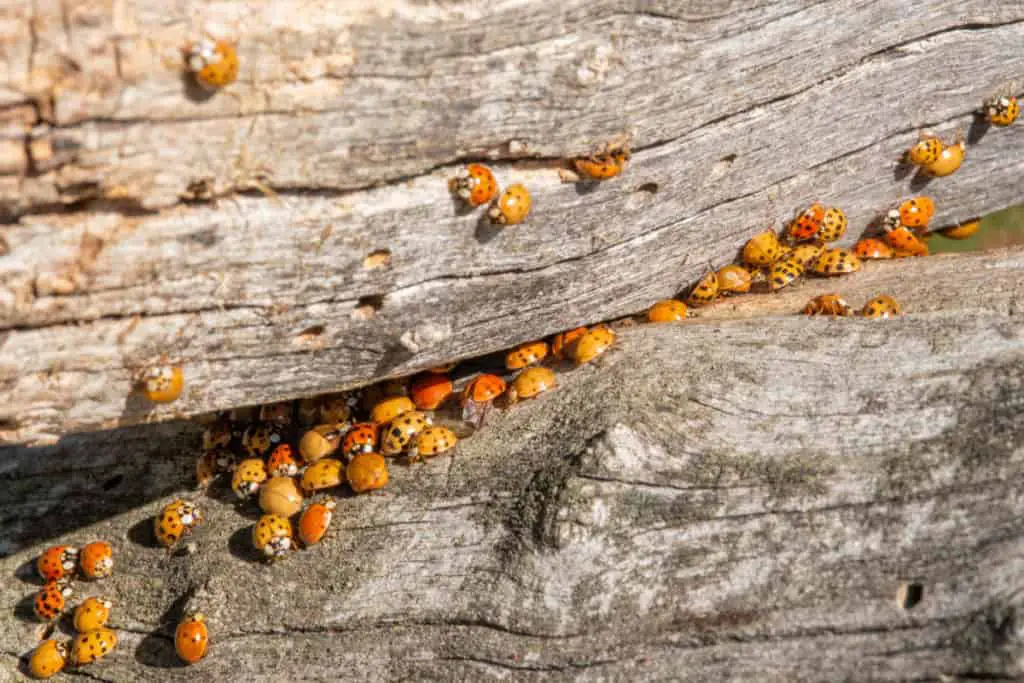
Ladybugs cannot survive long winters as a result of malnutrition. Winter means that their food sources like aphids, worms, and insect eggs dry up, and if they go too long without food, they are unable to survive. A long or harsh winter will also force the ladybugs to emerge early, making them vulnerable to the elements.
Spring
Spring is the season for laying eggs as the ladybugs emerge from hibernation. Also, plenty of aphids can sustain the new life in the form of larvae while leaving more than enough for the older ones. Ladybugs also tend to mate during the spring season because it is the most productive season.
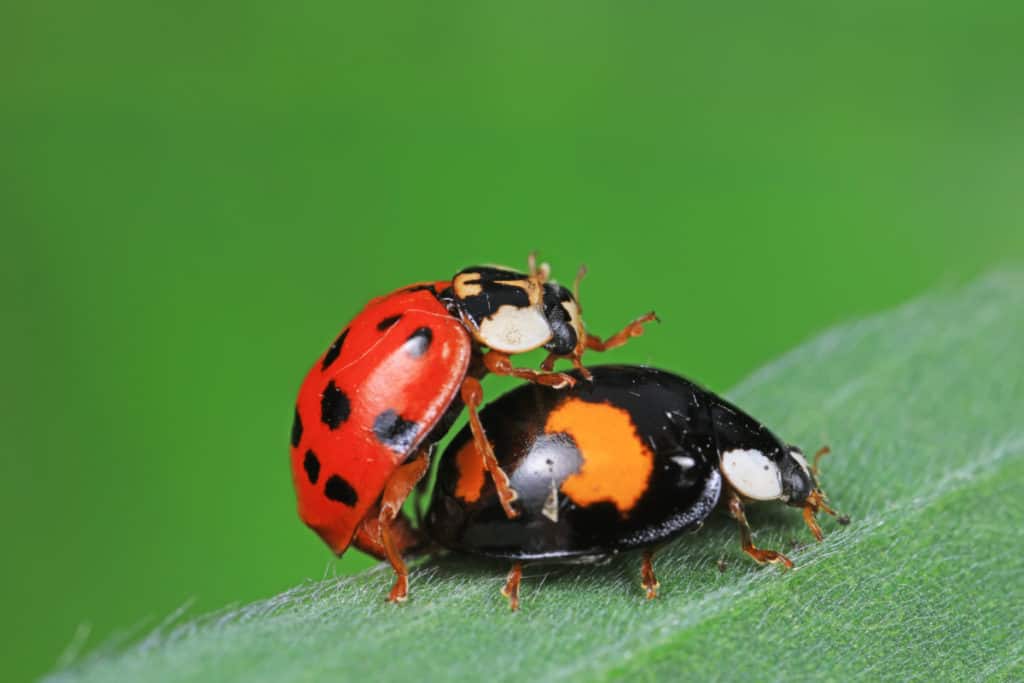
Summer
Ladybugs are cold-blooded, so they enjoy the summer, unlike the winter, where they have to huddle up to survive. During summer, aphids tend to switch their diet from aphids and insects to pollen and plant matter to store enough fat for winter hibernation.
Storing fat helps them survive when they have to go without feeding on their staple of aphids and insects.
Autumn
You can notice a lot of ladybugs swarming houses in autumn as the temperatures begin to drop. They begin to detect the cold wintery weather around the corner but are still enjoying the lingering warmth. There will be many flying about outside as they search for a place to keep safe.
What do Ladybugs Need To Live?
Plenty Of Food
As mentioned earlier, one adult can eat 75 aphids a day and around 5,000 aphids in its lifetime. Lady beetles can go for only two days before they need to eat again during seasons like spring, summer, and autumn.
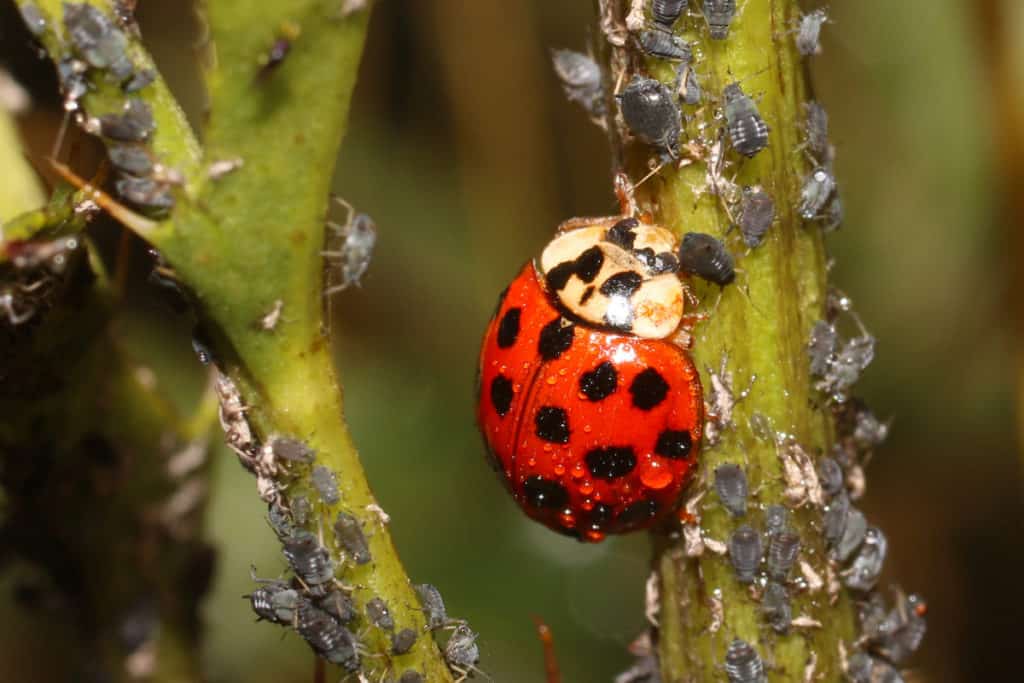
In winter, they can go for around eight weeks without food because they are using up the fat stored in their bodies to sustain themselves.
If you are keeping a ladybug as a pet, you need to feed them cucumbers and lettuce but make sure that you find them soft-bodied insects and aphids as well.
For a full rundown of what is in a ladybug’s diet check out this article we have written, What Do Ladybugs Eat?
Conducive Climate
The good news is that ladybugs can survive in all climates except for the harsh Arctic and Antarctic climates. That is why you find ladybugs in all parts of the world. However, in colder climates, the insect population is smaller because insect life is limited.
Insects like aphids thrive in rainy and wet weather because they love succulent new growth to feed on. That means that ladybugs appear in larger numbers around the same time because they have a consistent food source. So that makes spring the best climate for both aphids and ladybugs.
The summer months are too hot for aphids, fragile, and die off quickly in the heat. So during this season, ladybugs tend to rely on other food sources like scales, mites, mealy bugs, and leafhoppers, all soft-bodied insects similar to aphids.
Shelter From The Cold
Ladybugs cannot survive outdoors in the winter. To survive, they need to hide away during this season so they will even bury themselves in the ground to ride out the winter. When winter temperatures get below 55 degrees Fahrenheit, the ladybugs cannot fly, limiting their ability to source food.
How Does A Ladybug Keep Predators Away?
A Dotted Shell
The ladybug is quite intelligent when it comes to staying safe from predators. Surprisingly, the tiny and seemingly “helpless” beetles don’t even hide from predators. In fact, they are scaring them away.
The ladybugs use their brightly dotted shells to warn off predators. The dotted shells make them very conspicuous and scary at the same time. Not, so helpless, indeed!
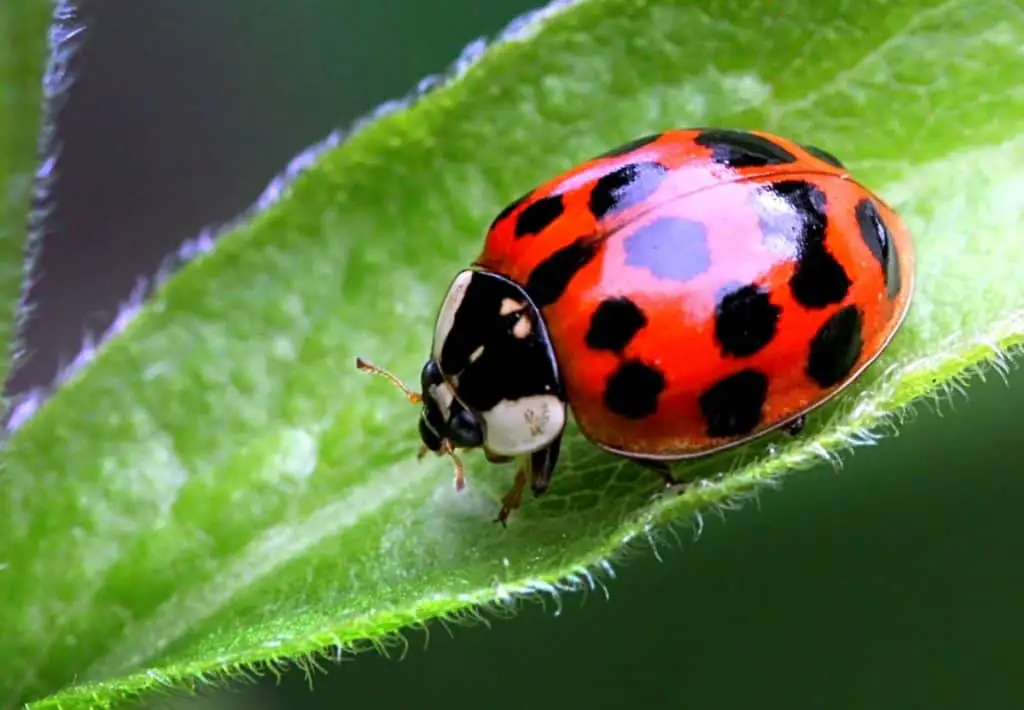
Secretions
They have a very bitter taste, and their joints have a foul-smelling goo that puts predators off. Their undesirable taste makes them less likely to be eaten, culminating in a long life.
Of course, some predators like frogs and lizards may try to feed on the ladybugs, but the alkaloid-rich fluid in the beetle’s leg joints is off-putting enough for them not to try again.
Flying Away
Ladybugs have the advantage of flying off, which helps them evade predators. Remember that ladybugs are beetles, so they have wings. They fly when the back wings beat, and they release their grip while launching into the air.
Ladybugs fly when their bodies attain the right temperature, which happens during the day. At night they will remain in the same place eating and laying eggs.
If you have a pet ladybug, it is best to release it in the early evening so that it can fly away safely.
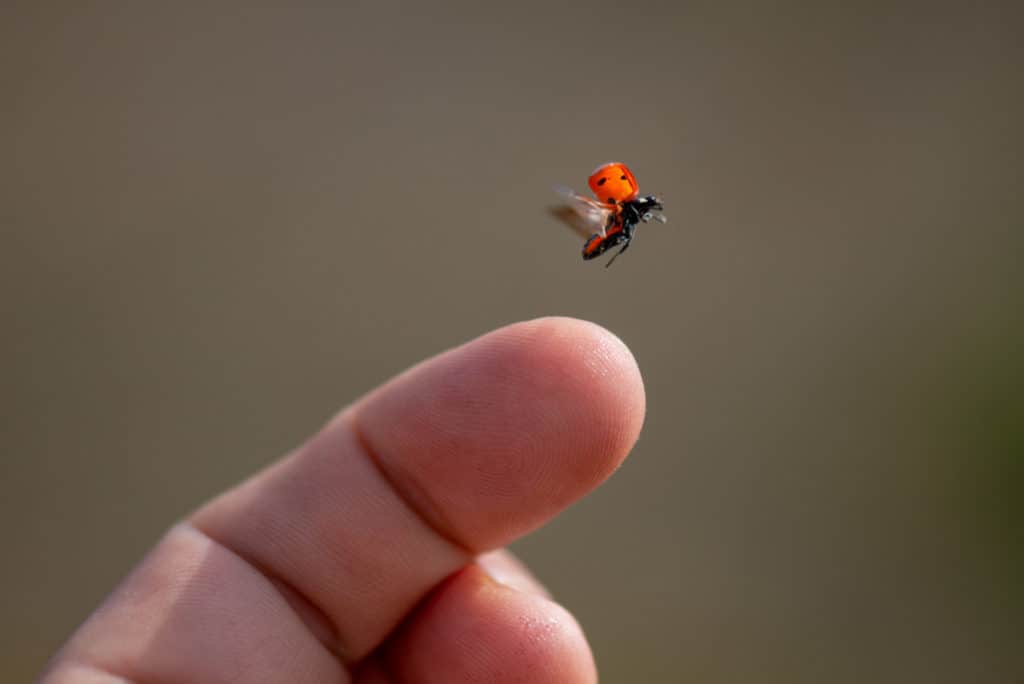
If you want to know more about how ladybugs are able to fly, we have written a comprehensive article about it. The article is called, Do Ladybugs Fly?
How Long Do Ladybugs Live As Pets?
A ladybug can live for about a year with the best care as a pet.
Ladybugs make good pets and are attractive to kids because of their vibrant colors. To make a ladybug comfortable and give them a chance at a long life, make sure their habitat is comfortable and as close to nature as possible.
Consider the size of the ladybug when providing food for it. That prevents overfeeding, which may kill the beetle. Feed your ladybug twice a day for optimal growth and survival. Also, feed them fruits and vegetables like lettuce and low acidic fruits like raisins and blueberries.
It is also crucial to make sure that your pet ladybug has adequate room in its container to move around freely. You can catch your ladybug in the winter and let them out in the spring so that they can go out and mate.
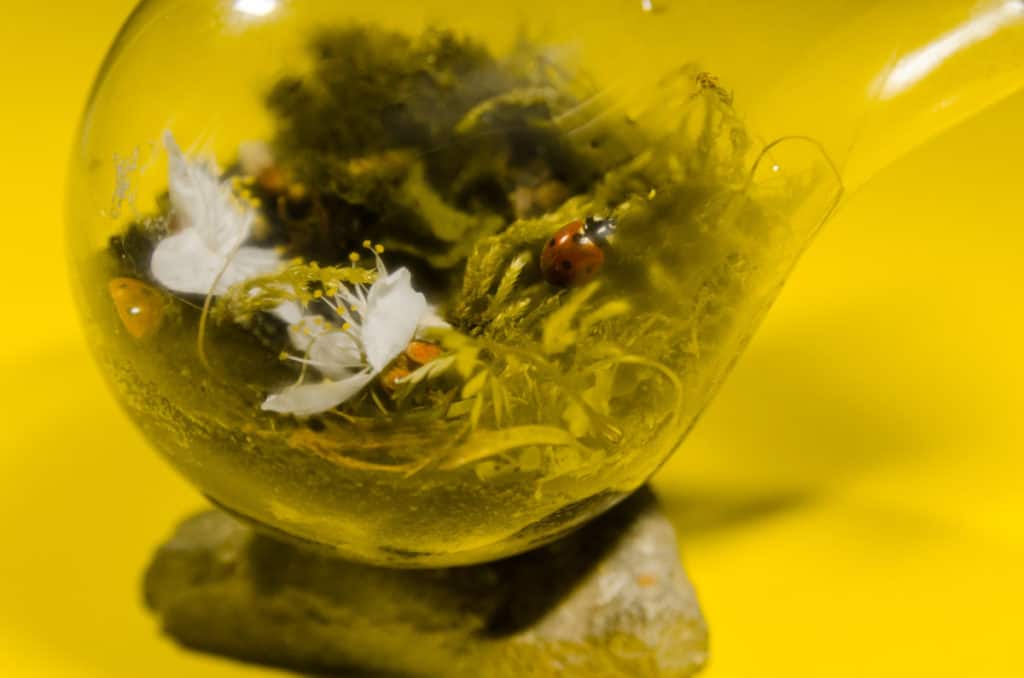
You can also buy ladybugs from online bug supplies. They can be shipped as adults placed in containers or pouches. And they can start reproducing immediately you give them consistent food and water.
The Wrap Up
A ladybug is a farmer’s best friend. They make a quick meal of the plant’s most dangerous enemy without harming the plant.
And when they get into your home, they do not damage your home in any way. They just need you to return the favor and shelter them from the cold for the winter. After all, they offer you free pest control services for the one to three years they live in your garden.
Sources
https://animals.mom.com/ladybug-adapt-its-environment-live-long-6903.html
https://peecnature.org/ladybug-life-cycle/
https://askdruniverse.wsu.edu/2017/04/10/ladybugs-survive-winter/
https://learning-center.homesciencetools.com/article/learn-about-ladybugs/
